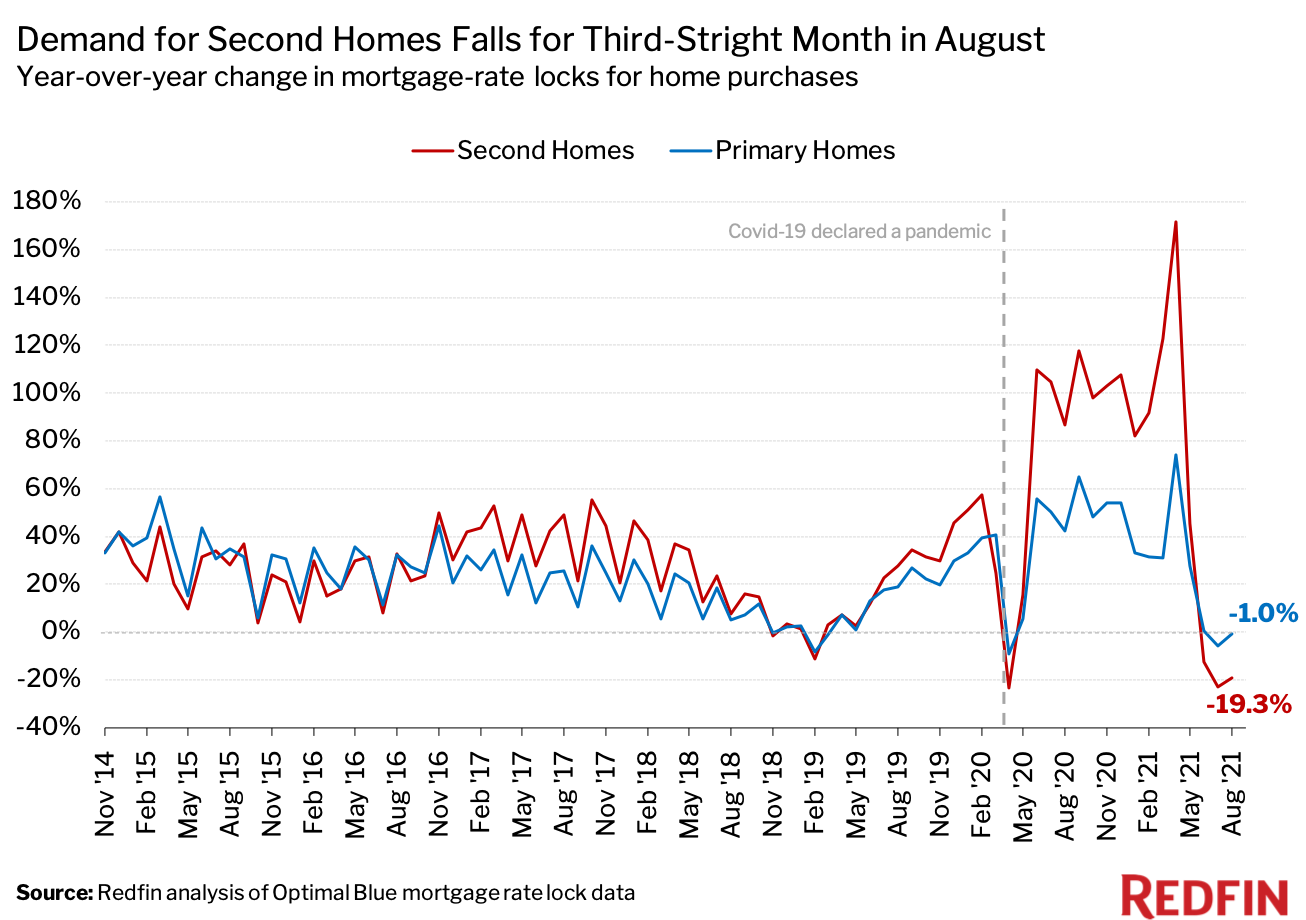Demand for second homes dropped 19.3% year over year in August, marking the third-straight month of declines. Demand for primary homes also fell, slipping 1% year over year in the second-consecutive month of declines.

That’s according to a Redfin analysis of mortgage-rate lock data from real estate analytics firm Optimal Blue. A mortgage-rate lock is an agreement between a homebuyer and a lender that allows the homebuyer to lock in an interest rate on a mortgage for a certain period of time, offering protection against future interest-rate hikes. Homebuyers must specify whether they are applying to secure a mortgage rate for a primary home, a second home or an investment property. Roughly 80% of mortgage-rate locks result in actual home purchases.
It’s important to note that while demand for second homes appears to have fallen significantly further year over year than demand for primary homes, that’s in large part because there was a relatively big gain in demand for second homes a year ago.
Demand for vacation homes swelled during the coronavirus pandemic—surging as much as 172% in April—as many affluent Americans sought an escape from cramped city life amid stay-at-home restrictions. But as the overall housing market has started to cool, that insatiable demand has slowed.
While interest in second homes is lower than it was a year ago, it remains above pre-pandemic levels and will likely stay elevated as a result of the permanent shift to remote work for many Americans, according to Redfin Lead Economist Taylor Marr. Sales of vacation homes made up 6.7% of overall existing-home sales in the first four months of this year, up from 5% in 2019, according to a recent report from the National Association of Realtors.
“The pandemic isn’t over, but the desire to escape isn’t as intense as it was before. People are increasingly returning to life as normal, with kids going back to school and cities coming to life again,” said Marr. “The housing market as a whole is still booming, just not as strongly as it was in the second half of 2020. Homebuyer competition, migration and home-sales growth have all slowed.”


